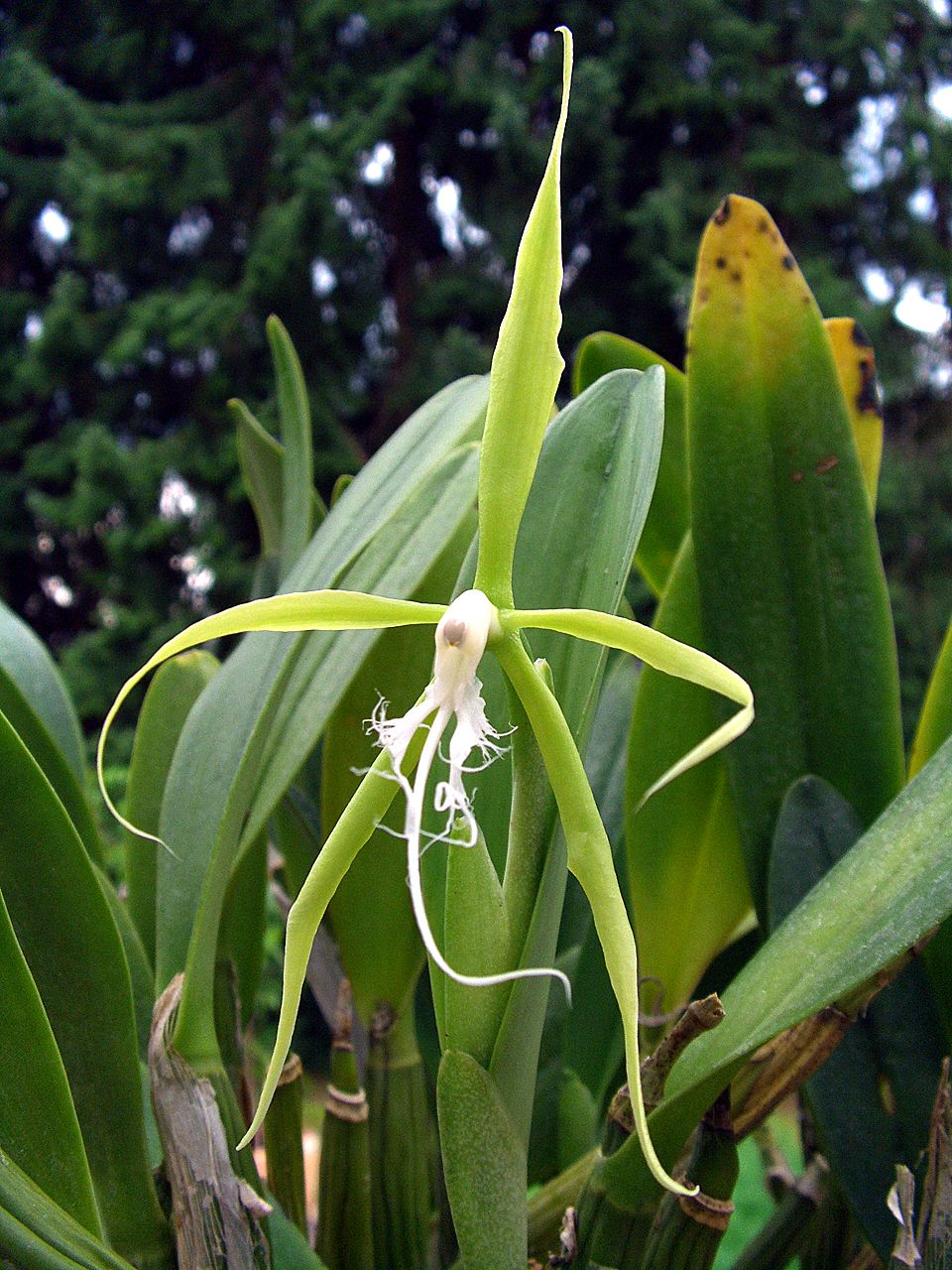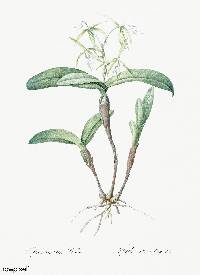
The growth form of E. ciliare is reminiscent of cattleyas, but its spindly green and white flowers, though nearly 10 cm across, are very different from the big, colorful corsage orchids. Three other native species, Epidendrum nocturnum, E. tridens and E. carpophorum, have similar flowers, but all lack the ciliate lateral lobes of the lip and the slender pseudobulbs.
Epidendrum ciliare grows on large boulders and trunks of trees usually in shady sites but sometimes in fully exposed areas. Populations occur mostly at low and middle elevations in moist coastal and limestone forests, and the upper and lower Cordillera forests.
Most populations bloom during the late fall and winter months. The flowers emit a powerful nocturnal fragrance which may differ among populations. On Culebra, the perfume attracts an enormous hawkmoth, Pseudosphinx tetrio. When a moth probes the nectarless flowers, the pollinarium becomes attached to its tongue. On subsequent visits to other flowers, pollination occurs when the pollinia are deposited on the stigma. Only a small number of flowers are pollinated so fruit production is low. Reproduction is further reduced because some fruits abort and others are eaten by rats (Ackerman & Montalvo 1990).
Epidendrum ciliare occurs throughout the West Indies, in Mexico, and Central and Sou th America. Population differentiation has occurred, even within islands such as Puerto Rico. Further study may show that several species are included in our concept.
Epidendrum ciliare grows on large boulders and trunks of trees usually in shady sites but sometimes in fully exposed areas. Populations occur mostly at low and middle elevations in moist coastal and limestone forests, and the upper and lower Cordillera forests.
Most populations bloom during the late fall and winter months. The flowers emit a powerful nocturnal fragrance which may differ among populations. On Culebra, the perfume attracts an enormous hawkmoth, Pseudosphinx tetrio. When a moth probes the nectarless flowers, the pollinarium becomes attached to its tongue. On subsequent visits to other flowers, pollination occurs when the pollinia are deposited on the stigma. Only a small number of flowers are pollinated so fruit production is low. Reproduction is further reduced because some fruits abort and others are eaten by rats (Ackerman & Montalvo 1990).
Epidendrum ciliare occurs throughout the West Indies, in Mexico, and Central and Sou th America. Population differentiation has occurred, even within islands such as Puerto Rico. Further study may show that several species are included in our concept.
Copyright ©2018. This sandbox portal development is powered by Symbiota software. Usage Policy.



